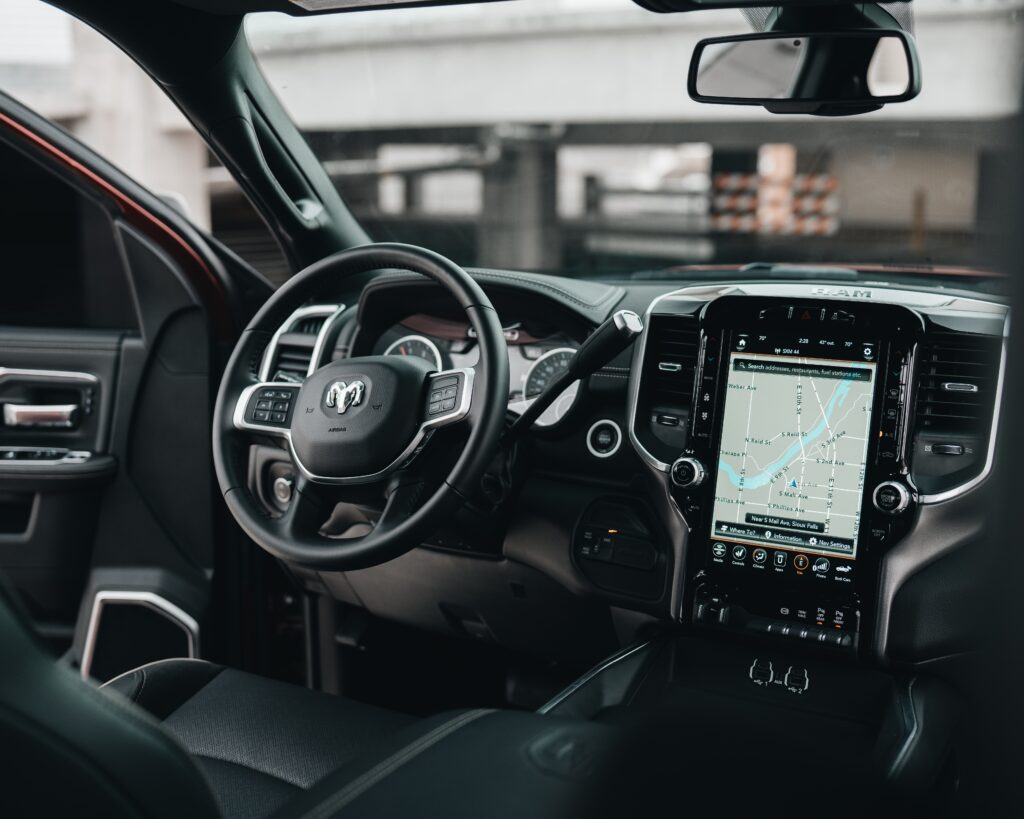Have you ever wondered if all wheels require balancing weights? Whether you’re a seasoned car enthusiast or simply curious about the mechanics of vehicles, understanding the importance of balancing weights is essential. This article explores the concept of balancing weights, their purpose, and whether they are necessary for every wheel. It aims to shed light on this common automotive question and provide you with valuable insights into the world of wheel balancing. So, let’s get right into it!

Reasons for Wheel Balancing
Improving ride quality
One of the primary reasons for wheel balancing is to improve the overall ride quality of your vehicle. When wheels are not properly balanced, you may experience vibrations, especially at higher speeds. These vibrations can be felt through the steering wheel, the floorboards, and even the seat. By properly balancing the wheels, you can minimize these vibrations and enjoy a smoother and more comfortable ride.
Preventing vibrations
In addition to improving ride quality, wheel balancing also helps to prevent unnecessary vibrations. When a wheel is unbalanced, it can create a wobbling effect as it rotates. This wobbling can lead to vibrations that not only affect the comfort of your ride but can also impact the performance and handling of your vehicle. By ensuring that your wheels are balanced, you can eliminate these vibrations and maintain optimal performance.
Extending tire life
Proper wheel balancing also plays a crucial role in extending the life of your tires. When a wheel is unbalanced, it causes uneven tire wear. This means that certain areas of the tire experience more friction and wear down faster than others. Over time, this can lead to uneven tread wear and reduce the overall lifespan of your tires. By keeping your wheels properly balanced, you can ensure that your tires wear evenly, maximizing their longevity and saving you money in the long run.
Types of Wheel Balancing Weights
Clip-on weights
Clip-on weights are one of the most common types of wheel balancing weights. As the name suggests, these weights are designed to be clipped onto the rim of the wheel. They come in various sizes and shapes to accommodate different wheel designs and sizes. Clip-on weights are typically made of steel and are secured in place using a spring clip. They are easy to install and remove, making them a popular choice for wheel balancing.
Stick-on weights
Stick-on weights, also known as tape weights, are another type of wheel balancing weight. These weights are typically made of lead and have an adhesive backing that allows them to be stuck directly onto the wheel’s rim. Stick-on weights are often used in situations where clip-on weights may interfere with other components of the wheel, such as brake calipers. They provide a clean and streamlined appearance while effectively balancing the wheel.
Adhesive weights
Adhesive weights are similar to stick-on weights but are typically used for balancing wheels with alloy rims. These weights are made of a soft and flexible material, such as zinc or polyester, which allows them to conform to the curvature of the rim. Adhesive weights also have a strong adhesive backing that ensures they stay securely in place even under harsh driving conditions. They are an excellent choice for maintaining wheel balance on alloy wheels.
Wheel centering rings
Wheel centering rings, also known as hub-centric rings, are not technically weights, but they play a crucial role in achieving proper wheel balancing. These rings are used to fill the gap between the center bore of the wheel and the hub of the vehicle. By ensuring a precise fit, centering rings help eliminate any potential imbalance caused by an improper hub-to-wheel connection. They are particularly important when using aftermarket wheels that have a different center bore size than the vehicle’s hub.
Factors Affecting Wheel Balancing
Tire size and type
The size and type of tires you have on your vehicle can significantly affect wheel balancing. Different tire sizes and types have varying weights and characteristics that can cause imbalances. For example, larger and heavier tires may require additional weight to achieve proper balance compared to smaller and lighter tires. Similarly, the construction and tread pattern of the tire can also impact the balancing process.
Wheel dimensions
The dimensions of the wheel, such as the diameter and width, can also affect how the wheel needs to be balanced. Wheels with larger diameters may require additional weight to achieve balance compared to smaller wheels. Similarly, wider wheels may require a different distribution of weights to ensure proper balance. It is essential to consider the specific dimensions of your wheels when balancing them to achieve optimal results.
Symmetry of the wheel
The symmetry of the wheel itself is another crucial factor in wheel balancing. Wheels that are perfectly symmetrical in terms of weight distribution will require minimal balancing. However, if a wheel has areas of uneven weight distribution, it will need more weight added to achieve balance. This is why it is essential to properly inspect the wheels for any signs of damage or irregularities before balancing.
Weight distribution
The weight distribution of your vehicle can also impact wheel balancing. If your vehicle has more weight on one side, it can cause that side’s wheels to become unbalanced. This imbalance can lead to vibrations and uneven tire wear. It is crucial to ensure that the weight distribution in your vehicle is properly balanced to avoid any potential wheel imbalances.
Suspension and alignment
The condition of your vehicle’s suspension and alignment can also affect wheel balancing. If your suspension components, such as struts or shocks, are worn or damaged, they may not properly support the vehicle’s weight, leading to wheel imbalances. Additionally, if your vehicle’s alignment is out of spec, it can cause uneven tire wear and affect wheel balance. It is essential to regularly inspect and maintain your suspension and alignment to ensure proper wheel balancing.
Recommended Wheel Balancing Practices
Balancing when mounting new tires
One of the best times to perform wheel balancing is when mounting new tires. This ensures that the wheels are properly balanced from the very beginning and helps prevent any potential issues down the road. When getting new tires installed, make sure to request wheel balancing as part of the service. The technician will use the appropriate weights and equipment to achieve the optimal balance for your wheels.
Periodic balancing maintenance
Even if your wheels were properly balanced when new tires were mounted, it is still recommended to periodically check and rebalance them. Over time, factors such as tire wear and changes in weight distribution can affect the balance of your wheels. It is generally recommended to have your wheels balanced every 12,000 to 15,000 miles or as specified by your vehicle’s manufacturer. Regular balancing maintenance helps prolong tire life and ensures a smooth and comfortable ride.
Balancing after tire rotation
Tire rotation involves moving the tires from one position to another to ensure even tread wear. When performing a tire rotation, it is crucial to have the wheels rebalanced. This is because each tire position may have slightly different weight distributions, which can affect the overall balance of the wheels. Balancing after tire rotation ensures that the wheels remain properly balanced for optimal performance and tire longevity.
Balancing after hitting a pothole or curb
If you have recently hit a pothole or curb, it is essential to have your wheels balanced as soon as possible. Impacting a pothole or curb can cause wheel imbalances and potentially damage the tire or wheel itself. Balancing the wheels after such an incident helps identify any potential imbalances and prevent further issues, such as uneven tire wear or vibrations.

Consequences of Unbalanced Wheels
Uneven tire wear
One of the most notable consequences of unbalanced wheels is uneven tire wear. When a wheel is not properly balanced, certain areas of the tire can experience more friction and wear down faster than others. This can lead to uneven tread wear patterns, reducing the lifespan of the tire. Uneven tire wear also negatively affects traction and can compromise the safety of your vehicle.
Reduced traction and handling
Unbalanced wheels can significantly impact the traction and handling of your vehicle. When a wheel is unbalanced, it can cause vibrations that are transferred to the steering system. This can result in a steering wheel that shakes or vibrates, making it difficult to maintain control of the vehicle. Additionally, unbalanced wheels can cause the vehicle to pull to one side, affecting stability and maneuverability on the road.
Increased stress on suspension components
Imbalanced wheels put increased stress on the suspension components of your vehicle. The vibrations caused by unbalanced wheels can accelerate wear and tear on components such as struts, shocks, and bearings. This can lead to costly repairs and potentially compromise the overall performance and safety of your vehicle. Proper wheel balancing reduces stress on suspension components and helps maintain their longevity.
Impaired fuel efficiency
Unbalanced wheels can also impact your vehicle’s fuel efficiency. The vibrations caused by imbalanced wheels create additional resistance, which can result in increased fuel consumption. This means that your vehicle may require more fuel to maintain the same speed and performance. By keeping your wheels properly balanced, you can help optimize fuel efficiency and save money on fuel expenses.
Potential safety hazards
Perhaps the most critical consequence of unbalanced wheels is the potential safety hazards they can pose. Vibrations caused by imbalanced wheels can affect your ability to control the vehicle, especially at higher speeds. This compromises the overall safety of your vehicle and increases the risk of accidents. Proper wheel balancing ensures a smooth and stable ride, contributing to the safety of both you and your passengers.
Exceptions to Wheel Balancing
Certain run-flat tires
Run-flat tires, which are designed to allow you to continue driving even after a complete loss of air pressure, may not always require traditional wheel balancing weights. These tires are specifically engineered to maintain their structural integrity even when deflated, and their construction may include built-in balancing features. It is recommended to consult the manufacturer’s guidelines for your specific run-flat tires to determine the appropriate balancing procedures.
Non-standard wheels
Non-standard wheels, such as aftermarket or custom wheels, may have different balancing requirements compared to factory wheels. These wheels often have unique designs and dimensions that require special attention during the balancing process. It is essential to consult the wheel manufacturer or a professional tire and wheel specialist to ensure that non-standard wheels are properly balanced to achieve optimal performance.
Specialized racing applications
In specialized racing applications, where performance and precision are paramount, different balancing techniques may be utilized. Some racing wheels, such as those used in Formula 1 or other high-performance racing series, may require advanced balancing methods to achieve the necessary performance characteristics. In these cases, it is best to rely on professionals with experience in racing wheel balancing to ensure the utmost precision and performance.

Professional Wheel Balancing vs. DIY
Advantages of professional balancing
Opting for professional wheel balancing offers several advantages. Professional technicians have the expertise, experience, and specialized equipment to accurately balance wheels. They can quickly identify and correct any wheel imbalances, ensuring optimal performance and safety. Professional balancing also provides the convenience of having the service performed by trained professionals, saving you time and effort.
Benefits of DIY
While professional wheel balancing is recommended for optimal results, some individuals prefer to perform the task themselves. DIY wheel balancing offers cost savings and the flexibility to balance wheels at your own convenience. It can be a suitable option for those who have the necessary knowledge and access to proper balancing equipment. DIY balancing can also be a rewarding experience for automotive enthusiasts who enjoy performing maintenance and repair tasks themselves.
Considerations for DIY balancing
If you choose to perform DIY wheel balancing, there are several considerations to keep in mind. Firstly, ensure that you have the appropriate balancing equipment, such as a wheel balancing machine and the necessary weights. It is also crucial to educate yourself on the proper balancing techniques and procedures to achieve accurate results. Additionally, DIY balancing may not be suitable for certain wheel types or specialized applications, so it is essential to assess your capabilities and consult professionals when needed.
Signs of Imbalanced Wheels
Steering wheel vibrations
One of the most common signs of imbalanced wheels is vibrations felt through the steering wheel. These vibrations can range from subtle to severe and can be felt at different speeds. If you notice your steering wheel shaking or vibrating, especially at higher speeds, it is likely an indication that your wheels are imbalanced and need attention.
Uneven tire wear patterns
Another sign of imbalanced wheels is uneven tire wear patterns. If you notice that your tires are wearing down more on one side or in specific areas, it is likely due to wheel imbalances. Uneven tread wear can result in the need for premature tire replacement and compromises the overall performance and safety of your vehicle.
Pulling to one side
When a wheel is imbalanced, it can cause the vehicle to pull to one side. This means that the vehicle tends to veer or drift slightly in one direction, requiring constant steering correction to maintain a straight path. If you notice that your vehicle consistently pulls to one side, it may be a sign of wheel imbalance that needs to be addressed.
Unusual noise or shaking
Imbalanced wheels can also manifest as unusual noises or shaking in the vehicle. You may hear a humming or buzzing sound coming from the wheels, especially as you accelerate. Additionally, you may feel shaking or vibrations throughout the vehicle, not just through the steering wheel. These symptoms can be indications of imbalanced wheels that require immediate attention.

The Wheel Balancing Process
Removing the wheels
The first step in the wheel balancing process is to remove the wheels from the vehicle. This is typically done by lifting the vehicle using a hydraulic lift or jack and removing the lug nuts that secure the wheels to the hub. It is essential to follow proper safety procedures when removing the wheels and ensure that the vehicle is stable and secure.
Inspecting for damage
Once the wheels are removed, it is crucial to perform a visual inspection to check for any damage or irregularities. Look for signs of wheel corrosion, bent rims, or any visible tire damage. Inspecting the wheels before balancing ensures that any existing issues are addressed and prevents potential balancing problems from being masked by pre-existing damage.
Mounting on a balancing machine
After the visual inspection, the wheels are mounted onto a wheel balancing machine. This machine uses a shaft and cone assembly to hold the wheel in place securely. The machine spins the wheel at high speeds to determine any imbalances. As the wheel rotates, the machine’s sensors detect any vibrations or wobbles caused by uneven weight distribution.
Attaching appropriate weights
Based on the readings from the wheel balancing machine, the technician will determine the exact amount and placement of weights required to balance the wheel. The appropriate weights, such as clip-on or stick-on weights, are then attached to the designated areas of the wheel. The weights are carefully positioned to counterbalance any imbalances detected during the spinning process.
Reinstalling the wheels
Once the wheels have been properly balanced and weights have been attached, they are ready to be reinstalled on the vehicle. The technician ensures that the lug nuts are torqued to the manufacturer’s specifications to secure the wheels to the hub. It is essential to follow proper tightening procedures to avoid any damage to the wheels or potential safety issues.
Conclusion
Wheel balancing is an integral part of maintaining optimal vehicle performance and safety. By properly balancing your wheels, you can improve ride quality, prevent vibrations, and extend the life of your tires. Factors such as tire size, wheel dimensions, symmetry, weight distribution, and suspension alignment can all affect wheel balancing. It is recommended to practice regular wheel balancing maintenance, especially when mounting new tires, after tire rotation, or after hitting a pothole or curb.
Unbalanced wheels can lead to uneven tire wear, reduced traction and handling, increased stress on suspension components, impaired fuel efficiency, and potential safety hazards. While certain exceptions exist for run-flat tires or non-standard wheels, professional wheel balancing is generally recommended for optimal results. However, DIY balancing can be considered for those with the necessary knowledge and equipment, keeping in mind the specific considerations and limitations.
Signs of imbalanced wheels include steering wheel vibrations, uneven tire wear patterns, pulling to one side, and unusual noise or shaking. The wheel balancing process involves removing the wheels, inspecting for damage, mounting on a balancing machine, attaching appropriate weights, and reinstalling the wheels. Regular wheel balancing maintenance should be part of your vehicle’s overall maintenance routine to ensure a smooth and comfortable ride, prolong tire life, and maintain optimal performance.


